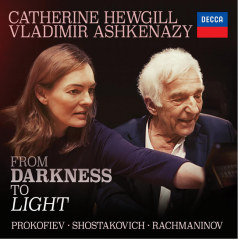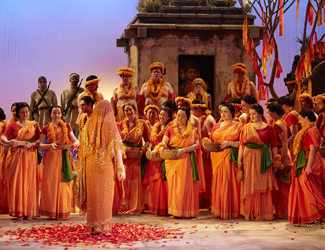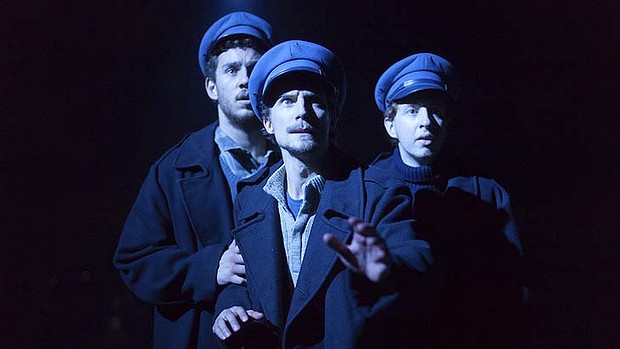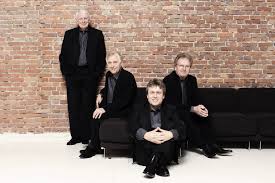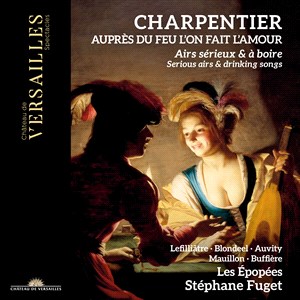Album Review: From Darkness To Light/ Hewgill/ Ashkenazy/ Decca
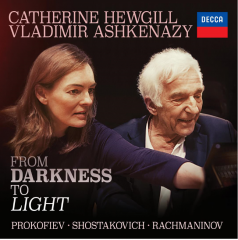
From Darkness to Light is a new single CD release from Decca Classics on which cellist Catherine Hewgill and conductor and pianist Vladimir Ashkenazy perform the cello sonatas of Prokofiev and Shostakovich followed by Rachmaninov’s Vocalise.
The pairing of the sonatas is undeniably suitable on many counts. Hewgill and Ashkenazy have collaborated closely over many years and scores of performances – she in her capacity as principal cellist with the Sydney Symphony Orchestra and he in his role as chief conductor of the Sydney Symphony Orchestra from 2009 to 2013. As well, the release coincides with Ashkenazy’s return to the Sydney Symphony Orchestra to conduct an all- Shostakovich programme this month. Not least, the two sonatas are by Russian composers who fell foul of the dictator Stalin. Ironically, Prokofiev and Stalin died on the same day with the composer’s death going unnoticed over the passing of the more notorious politician.
For Ashkenazy, the music of Russia is part of his DNA. He was born in Gorky in 1937 and grew up in Stalin’s Russia, graduating from the Moscow Conservatory and winning international piano competitions from the age of 18. This release is also the second time he has recorded these two sonatas, the first recording being nearly 15 years ago, in 2003 with the American cellist Lynn Harrell. Although Sydney audiences know and love Ashkenazy best as a conductor, it was as a pianist that he made his name and he continues to record in both capacities.
Prokofiev’s three-movement Sonata for Cello and Piano, opus 119 (1949) is his only work for the genre. It was inspired by a performance by Rostropovich of a sonata by Prokofiev’s long-term friend Miaskovsky, who thought the opus 119 “a miraculous piece of music.” It was premiered by Rostropovich and the pianist Svatislav Richter. Prior to being heard in public, the sonata had to be performed for the Composer’s Union whose members would decide the musical and political values of the piece. Following this, it had to be approved by the Radio Committee. It was only after this intense vetting that the sonata received its premiere in March 1950 in the Small Hall of the Moscow Conservatory.
Hewgill and Ashkenazy capture the horror of the times, opening the first movement marked Andante grave ominously, very much in the “darkness”, before entering a more lyrical duet. They achieve a skittish humour in the second movement, Moderato, in which the percussive alternates with the lyrical. The final Allegro ma non troppo is played boldly, heavily influenced by Russian folk rhythms and harmonies.
In transit from “darkness to light” is Shostakovich’s four-movement Sonata for Cello and Piano, opus 40 (1934), his first large-scale piece of chamber music. It was considered relatively conservative in its content and includes, for the first time, a repeated first movement exposition. Its first movement is in fact more joyous than Prokofiev’s opener, reflecting his love-life at the time. Yet the third movement, Largo, is a dolorous and dissonant aria, which speaks of his suffering, contrasted with the final Allegro with its swaggering bravado.
Finally, the end-point of the title – “light” – represented by Rachmanninov’s Vocalise opus 34 no 14 (arr Leonard Rose), an intensely lyrical song without words that was written originally for high voice and piano. It lends itself beautifully to instruments which sing and sustain impossibly long lines. It is a perfect foil to the two preceding pieces with their political overtones and moods that move from the forbidding to the elated. This is pure romance with an enchanting melody and sensitive accompaniment.
The comprehensive programme notes are of tremendous historical interest, quoting Elizabeth Wilson, Shostakovich’s biographer. The booklet is rounded out with biographical notes and images of the performers. Recorded at Trackdown Studios in Sydney, Australia, on 9 and 13 October 2016, Vladimir Ashkenazy plays a Steinway piano.
Numerous musicians have recorded the Prokofiev/Shostakovich cello sonatas, amongst them, Yo-Yo Ma and Emmanuel Ax, Truls Mørk with Jean-Yves Thibaud and Lars Vogt, Pieter Wispelwey and Dejan Lazic, Martha Argerich and Mischa Maisky and the incomparable Msitislav Rostropovich. A sortie through the entire collection of recordings is fodder for a rainy long-weekend.
Hewgill and Ashkenazy are consummate musicians and impeccable technicians. They convey to the listener, a deep understanding not only of each other’s musicianship, but of the music and importantly, the sentiments behind the works which tell of the personal and political lives of the writers. Prokofiev’s cello sonata is played with virtuosic passion, whilst Shostakovich’s cello sonata which drew on classical forms is played in a more restrained style. Rachmaninov’s Vocalise is given voice in an almost Impressionistic style, emphasising light and shade through melody rather than more complex sentiments.
Shamistha de Soysa for SoundsLikeSydney©

